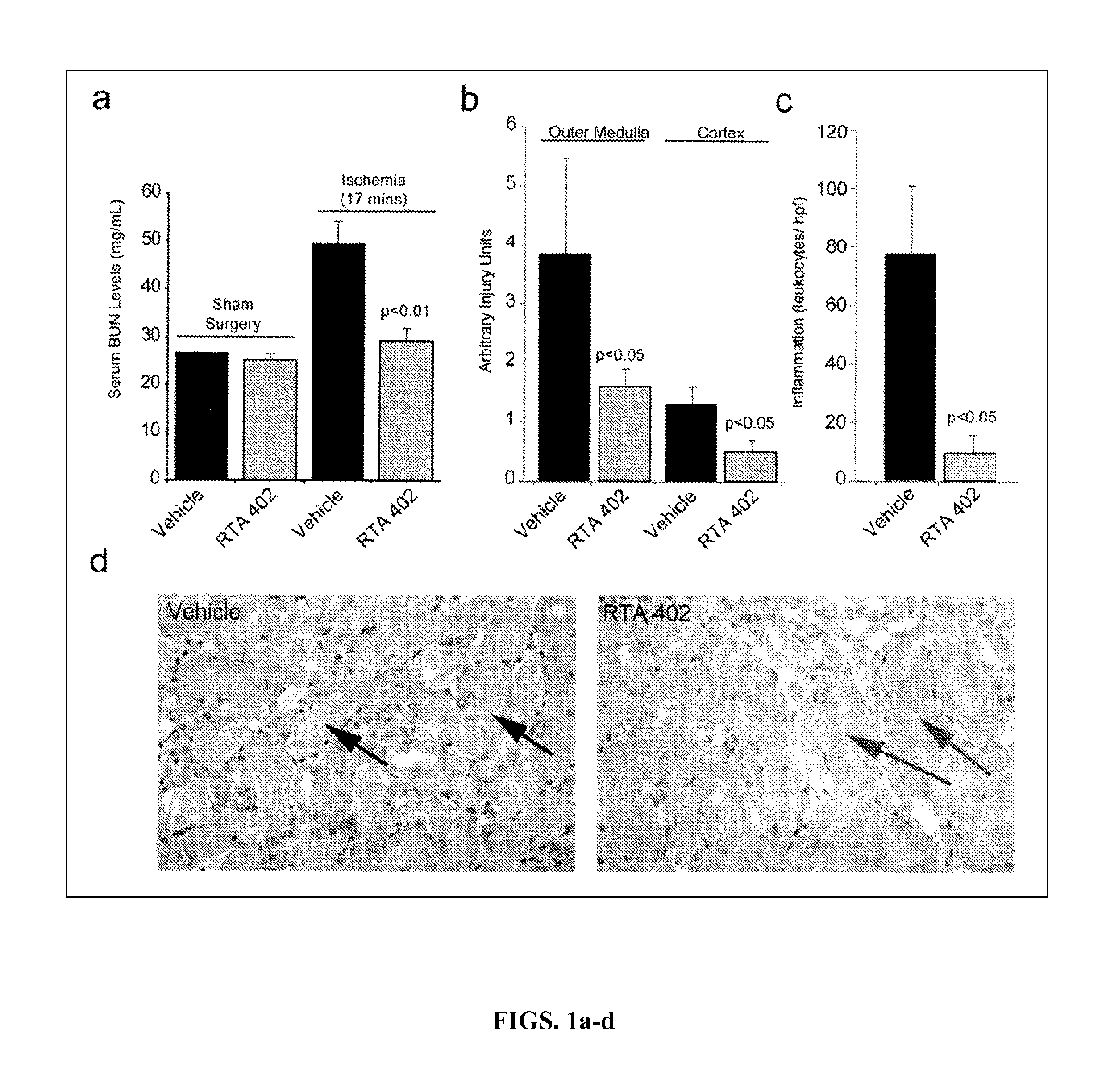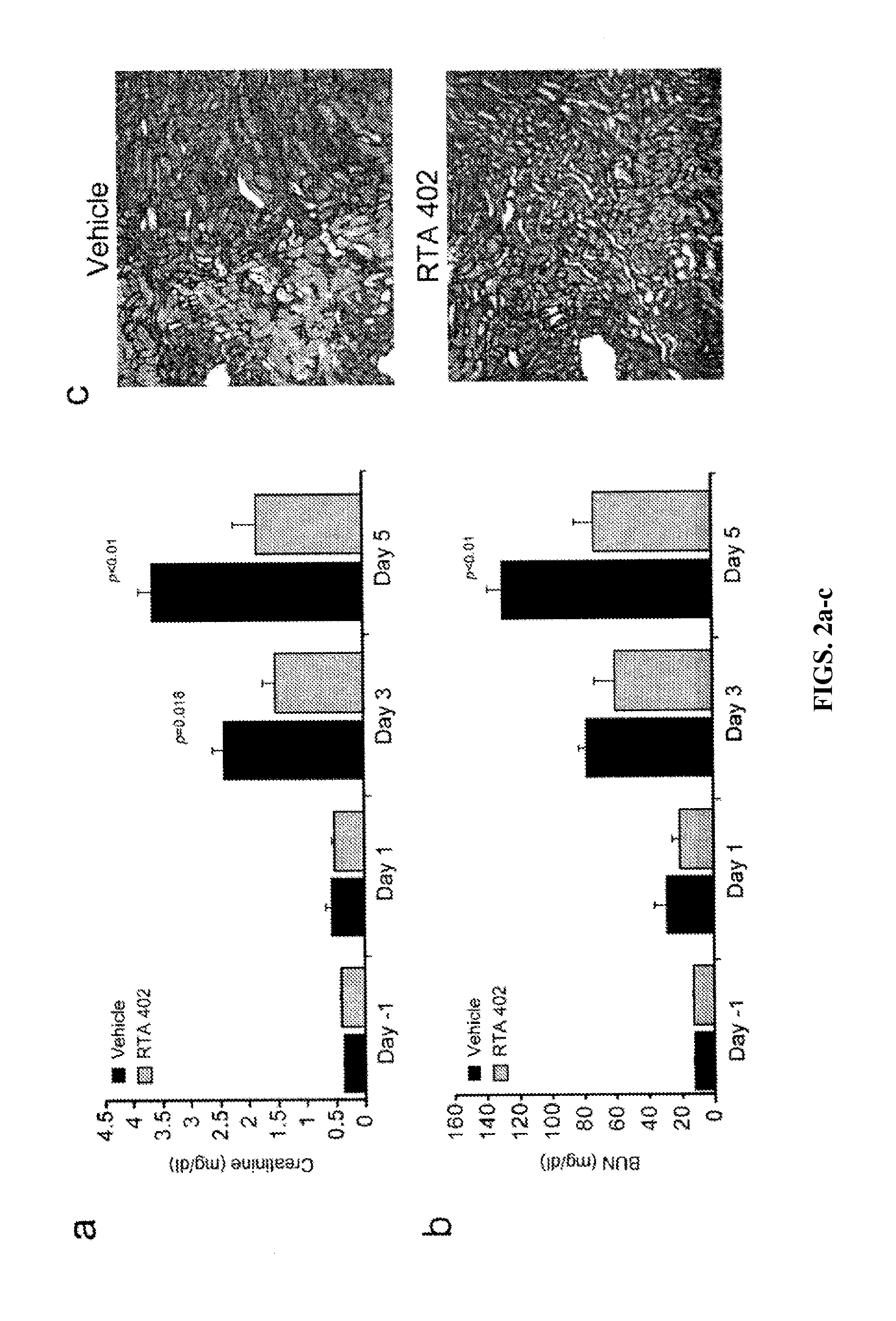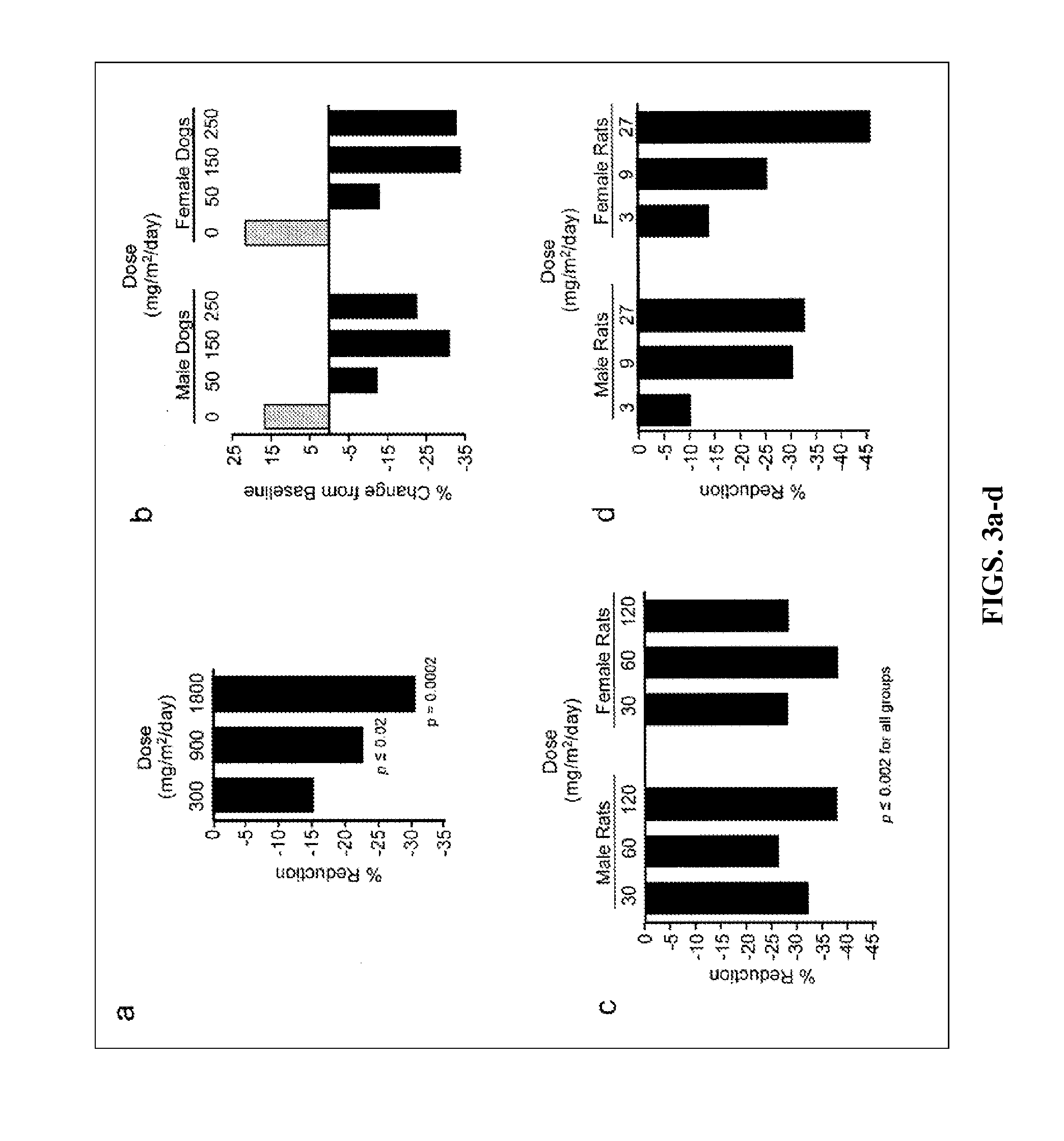Synthetic Triterpenoids and Methods of Use in the Treatment of Disease
a triterpenoids and synthetic technology, applied in the field of biology and medicine, can solve the problems of insufficient clearance of metabolic waste products from the blood, abnormal concentration of electrolytes, high invasiveness, significant side effects and quality of life problems, etc., and achieve the effect of improving the glomerular filtration rate or creatinine clearan
- Summary
- Abstract
- Description
- Claims
- Application Information
AI Technical Summary
Benefits of technology
Problems solved by technology
Method used
Image
Examples
example 1
Materials and Methods
[0161]Chemicals
[0162]Triterpenoids were synthesized as previously described in Honda et al. (1998), Honda et al. (2000b), Honda et al. (2002) and Yates et al. (2007), which are all incorporated herein by reference.
example 2
Mouse Ischemia-Reperfusion Results
[0163]In a mouse model of ischemic acute renal failure, the renal artery is clamped for approximately twenty minutes. After this time, the clamp is removed and the kidney is reperfused with blood. Ischemia-reperfusion results in renal damage and decreased renal function which can be assessed by blood urea nitrogen (BUN) levels, which become elevated following renal damage. As shown in FIGS. 1a-d, surgically-induced ischemia-reperfusion increased BUN levels by approximately 2-fold. However, in animals treated with 2 mg / kg RTA 402 orally once daily beginning two days prior to the surgery, the BUN levels were significantly reduced (pa-c). Histological measures of kidney damage and inflammation were also significantly improved by treatment with RTA 402 (FIG. 1d). These data indicate that RTA 402 is protective against ischemia-reperfusion induced tissue damage.
example 3
Rat Chemotherapy-Induced Acute Renal Injury Results
[0164]In another model of acute renal injury, rats were injected intravenously with the antineoplastic agent cisplatin. In humans, nephrotoxicity is a dose-limiting side effect of treatment with cisplatin. Cisplatin-induced damage to the proximal tubules is thought to be mediated by increased inflammation, oxidative stress, and apoptosis (Yao et al., 2007). Rats treated with a single dose of cisplatin at 6 mg / kg developed renal insufficiency as measured by increased blood levels of creatinine and BUN. Treatment with 10 mg / kg RTA 402 by oral gavage beginning one day prior to treatment with cisplatin and continuing every day significantly reduced blood levels of creatinine and BUN (FIGS. 2a-b). Histological evaluation of the kidneys demonstrated an improvement in the extent of proximal tubule damage in RTA 402-treated animals compared to vehicle-treated animals (FIG. 2c).
PUM
 Login to View More
Login to View More Abstract
Description
Claims
Application Information
 Login to View More
Login to View More - R&D
- Intellectual Property
- Life Sciences
- Materials
- Tech Scout
- Unparalleled Data Quality
- Higher Quality Content
- 60% Fewer Hallucinations
Browse by: Latest US Patents, China's latest patents, Technical Efficacy Thesaurus, Application Domain, Technology Topic, Popular Technical Reports.
© 2025 PatSnap. All rights reserved.Legal|Privacy policy|Modern Slavery Act Transparency Statement|Sitemap|About US| Contact US: help@patsnap.com



